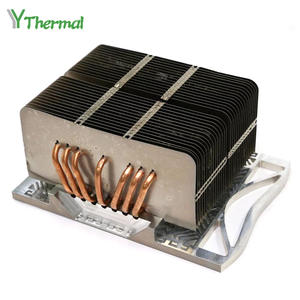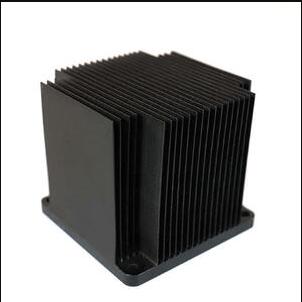
Radiators are often used in computers as a tool to dissipate heat. With a radiator, the temperature inside the computer can be greatly reduced. The internal structure of the radiator is relatively simple, and radiators with different structures can adapt to different environments.

Evaluating the performance of a heat sink using the thermal resistance provided by the product manufacturer The heat transfer coefficient of a heat pipe heat sink is the most common method used to evaluate the characteristics of a heat pipe heat sink in a particular application. The thermal resistance provided by the radiator manufacturer is generally measured by a radiator with a square heat source. Since the thermal resistance of the radiator is not constant, it often happens that the selected radiator does not meet the heat dissipation requirements. The heat transfer coefficient of the same heat pipe radiator will change with the size of the pyrogen relative to the reference point of the heat pipe radiator.
The steel finned tube radiator is the key equipment for heating gas in industrial production. Its heat medium is steam or boiled water, which is suitable for the heat convection that changes greatly on the inside and outside of the tube. In the final analysis, it is related to the heat conduction film index. When the difference between the heat conduction film indices on the two sides of the heat conduction surface is quite large, the steel finned tube radiator is suitable for selection. Because at this time, the smaller side becomes the key position for controlling the heat conduction, so when designing the heat pipe radiator, it should be It is beneficial to maximize the thermal conductivity of the smaller side as much as possible, preferably to make the film indices of both sides roughly equal. For heat transfer with very high thermal conductivity on both sides of the tube, it is not suitable for this heat exchanger, such as oil-oil, water-water, gas-gas heat exchangers.
For indoor spaces with a small total area, such as toilets, cylindrical heat pipe radiators can be selected, and wall-mounted radiators can be used to save indoor space design; pure cotton towels or baked large clothes should also be hung on the horizontal column; For houses with a large area, it is recommended to purchase a plate radiator, which can improve the heat convection plate inside, and the heat pipe heat dissipation method of radiation source heating convection can make the room exceed the actual effect of heat pipe heat dissipation in a short period of time, which can save a lot of power and energy.
There are many reasons for the mixture of water and air to turn the water, mainly including: the ablation of the cylinder head gasket, the loosening of the cylinder head screw, and the high-pressure gas in the cylinder entering the waterway according to the gap that is not tightly closed. If the air pump pad is broken, there will usually be a lot of overturning in such a thing, and it is very easy to search for the reason.
If you must start with the radiator, it is recommended that you do not have to move or increase the number of the original radiator, which is very prone to problems such as water seepage. After the radiator structure calculates the temperature required in the room, if necessary, purchase a hanging heating plate and install it directly in the room, which is beautiful and practical.

The above is the "structure of the radiator". When the structure of the radiator is more complicated, it may be used in a more advanced server or computer room as an auxiliary tool for heat dissipation. Yuanyang is a professional manufacturer of various styles of radiators. The products are exported to dozens of countries and regions. Customers and friends are welcome to contact us to discuss cooperation.